

Max Davies
2026 Ram 1500 Rebel review
5 Days Ago
The GLX-R maintains the Triton's penchant for value. Cost cutting is conspicuous in a few areas, but it’s convincing and well resolved overall.
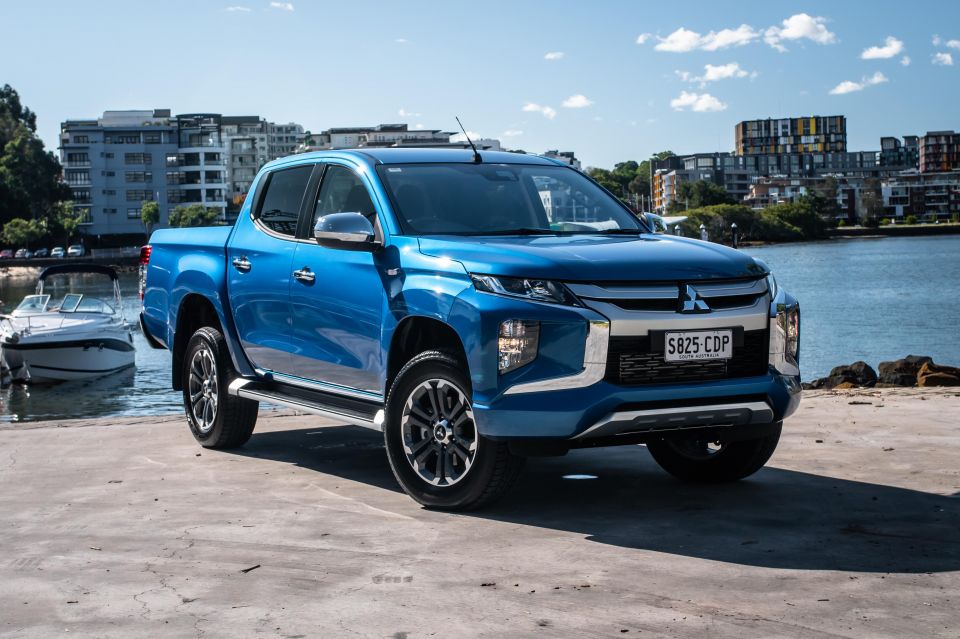
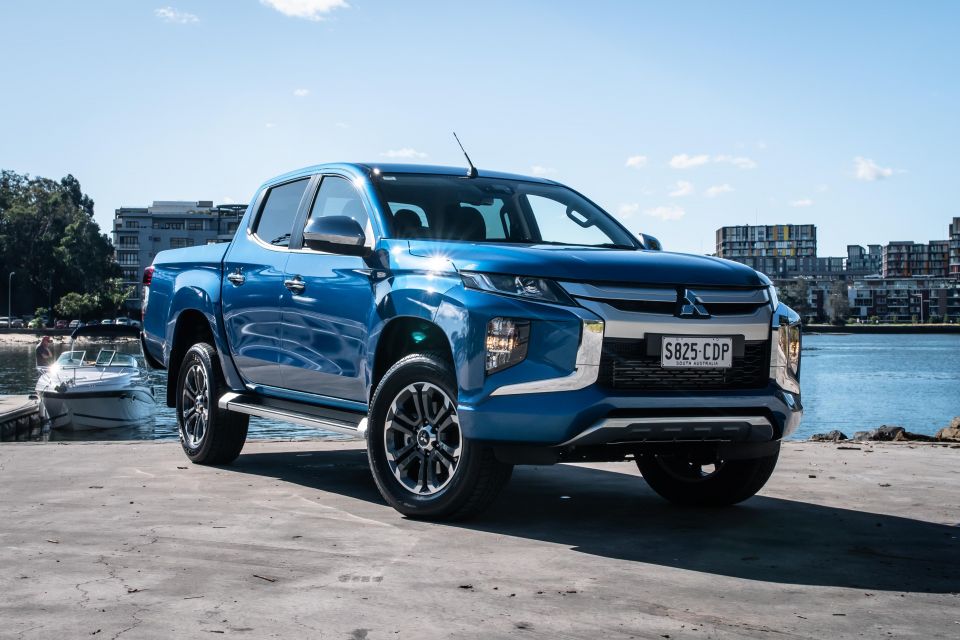

Journalist
New from
$22,490
excl. on-roads

Journalist
New from
$22,490
excl. on-roads


Journalist
New from
$22,490
excl. on-roads

Journalist
New from
$22,490
excl. on-roads
Quickly see how this car stacks up against its competition. Select any benchmark to see more details.
Where expert car reviews meet expert car buying – CarExpert gives you trusted advice, personalised service and real savings on your next new car.
Little grass has grown under the tyres of Mitsubishi Triton lately as the third-largest selling ute range in Oz attempts to chase the success of more popular Ford Ranger and Toyota HiLux rivals.
Early 2019’s significant ‘Dynamic Shield’ styling makeover brought key equipment and safety updates, followed by key tweaks for 2020 for high-end GLX+ ‘work’ and GLS ‘play’ variants.
In the 18-month interim, the already burgeoning range welcomed a (Dakar Rally motorcycle champ) Toby Price special edition and, more recently, two brand-spanking nameplates in GSR and our review subject here, the GLX-R.

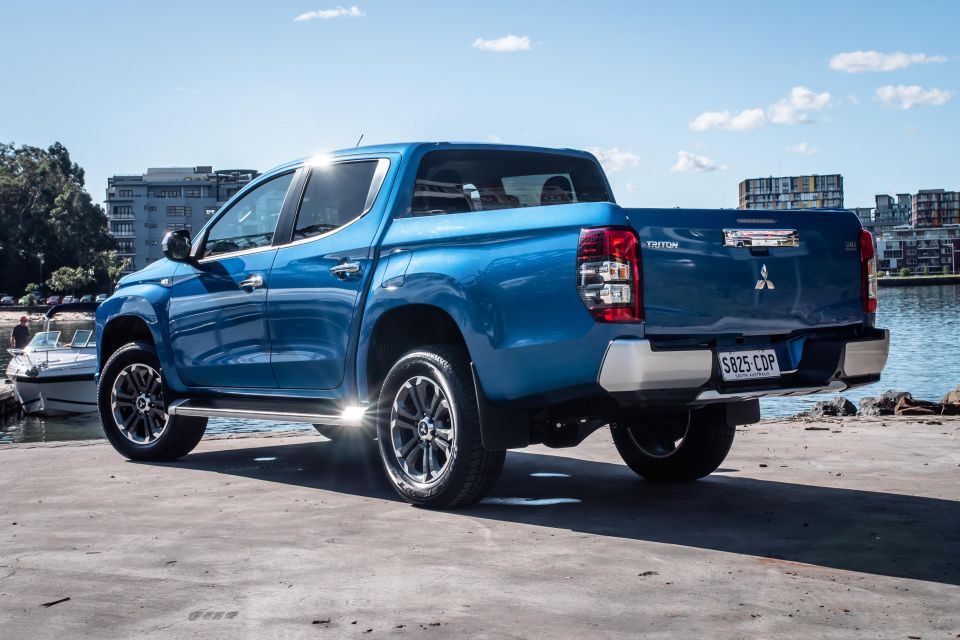
Where does GLX-R sit in range? It slots neatly above GLX+ full-fruit ‘work’ variant and below the GLS, Triton’s tip into the high-spec ‘lifestyle’ format (with GLS Premium and GSR further up the ladder).
The GLX-R is an amalgamation of sorts, deriving much of its powertrain and equipment spec from the GLX+ (albeit with a few key differences) while adopting the smart upmarket appearance package of the GLS. A missing link between work and play, really.
The GLX-R also carves out a bit of a unique niche. Where the aforementioned 2020 updates looked to bolster off-roading credentials of its cosy GLX+ and GLS stablemates, the new version is certainly more on-road – arguably urban – centric. It carves its niche as the sharp-dressed, wallet-friendly, city slicker of the Triton pack.

One constant throughout the Mitsubishi Triton shake-ups is the strong value-for-money pitch. GLX-R included. The Double Cab-only prospect bundies on at $41,990 before on-roads for the manual and wants $44,490 list for the automatic (up from five- to six-speed in 2019) that we’re testing here.
By comparison, the logical Ranger cross-shop is the XLS that wants for $50,290 list, though the pricier ($53,540 list) Sport is a bit more like-for-like in positioning within range. Toyota wants $49,515 before on-roads for its steel-wheeled, tradie-spec SR dual-cab auto and the SR5, for that lifestyle vibe, is up around $55,240 list.
On appearance alone, the Triton GLX-R looks amazingly upmarket for circa-$45k ask. But since it’s February launch, its been on a sharper offer still: $39,990 for the manual or $42,490 the auto, both as drive-away prospects. (Ford, too, is doing deals on Ranger, though XLS is still around $3000 pricier on offer.)
For many ute shoppers, the extra $1000 over the pedestrian-looking GLX+ donor is justifiable investment enough for the much sportier and classier appearance alone. That said, if solid white or red isn’t your bag, there’s an extra $740 cost for metallic and mica colours – such as our tester’s fetching Impulse Blue – or a $940 premium for the fancy White Diamond finish.
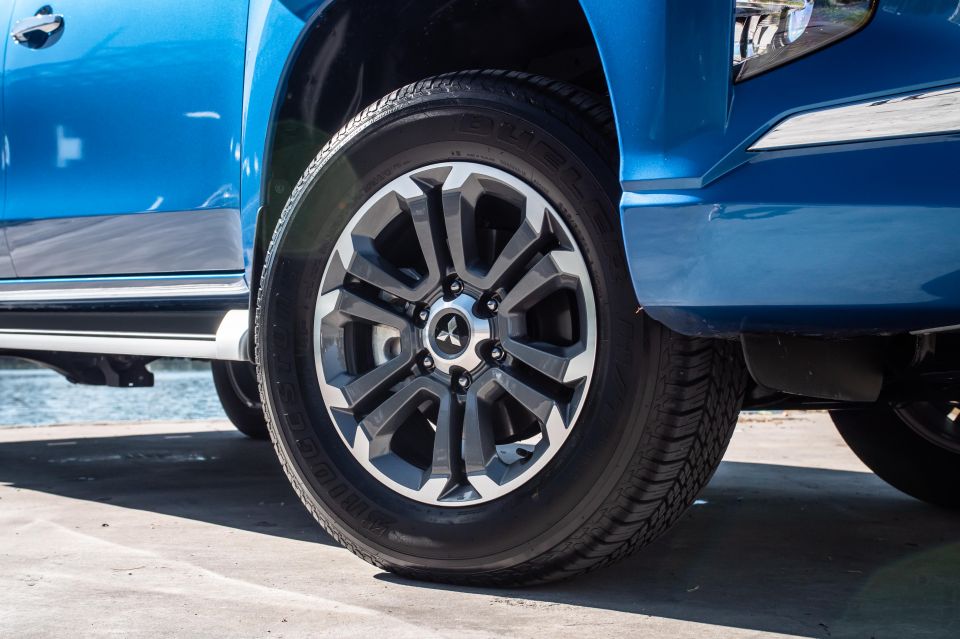
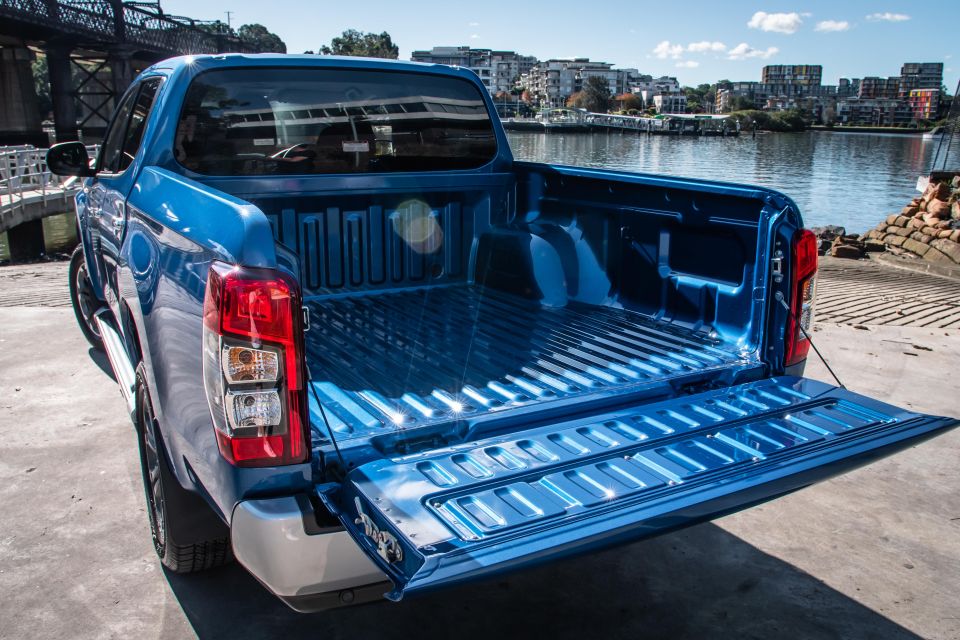
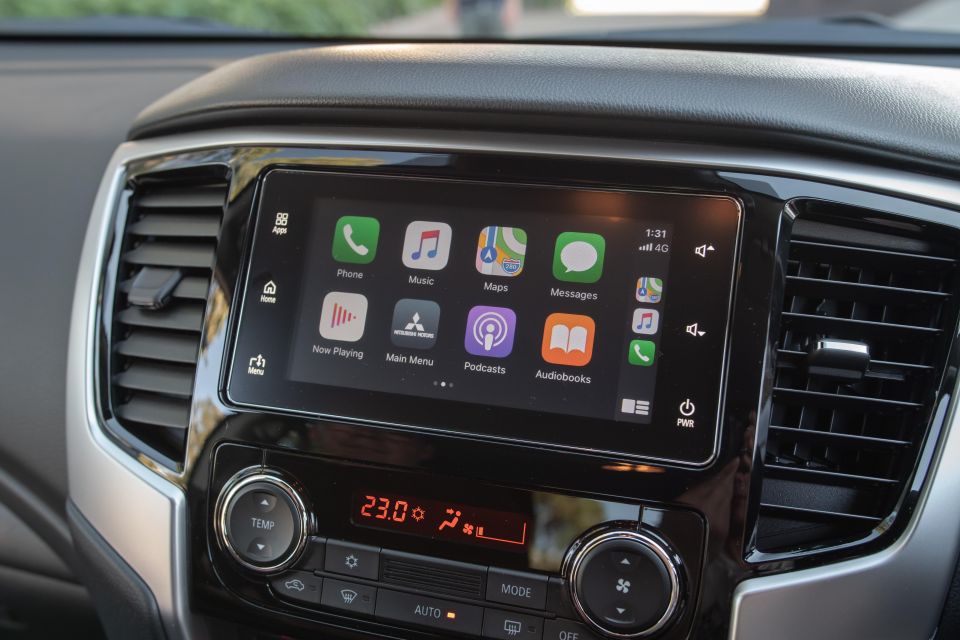
Buy your new car without the stress. It's fast, simple and completely free.

Great service from Travis and team, second time I have used this business would not hesitate to recommend them to anyone
Craig C.
Purchased a Ford Ranger in Sunshine Coast, QLD
CarExpert helped Craig save $7,224 on his Ford Ranger, now let us save you on your next new car.
Get your BEST priceFor its $1000 premium over the GLX+, the GLX-R spruce up brings fetching 18-inch alloys with 265mm tyres, halogen fog lights, a silver grille treatment and chrome mirror caps, door handles and bumper trim. Meanwhile, the cabin gets a leather steering wheel and transmission selector, as well as carpet flooring for a bit of a subtle improvement.
There are a few key differences adopted from higher-spec Tritons. One is that the GLX-R fits larger GLS-spec 320mm front disc brakes facilitated by the large 18-inch wheels, whereas lower-grade Tritons (including GLX+) fit smaller 294mm units under 16s.
The GLX-R also shares the regular rear leaf springs with GLS/GSR rather than the heavy-duty GLX/GLX+ tune. And as if to anchor it on-road specialist theme, the GLX-R omits the limited-slip rear differential introduced to the GLX+ for its 2020 update. Important differences if you’re cross-shopping close cousins in range.
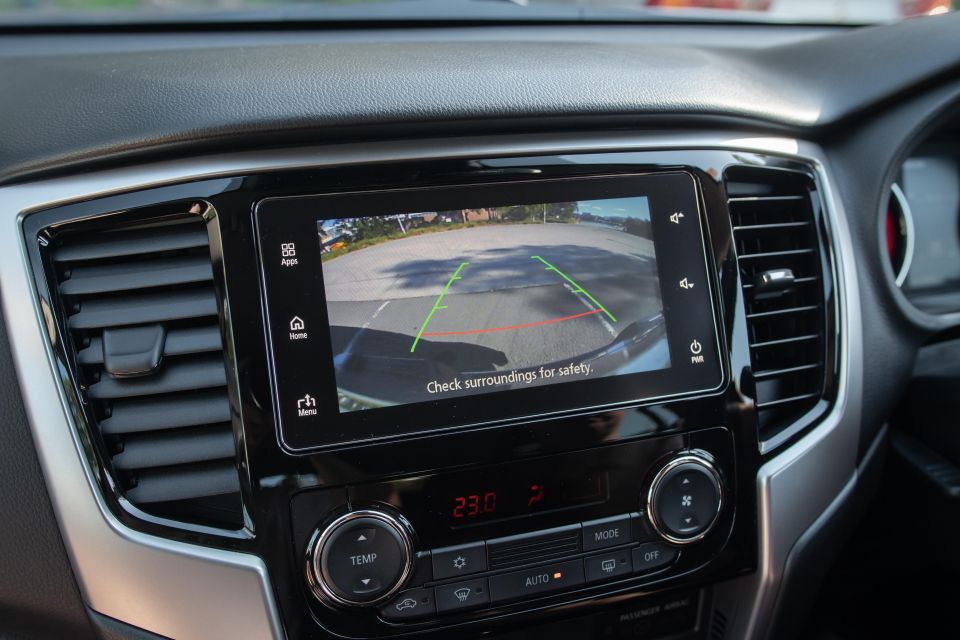
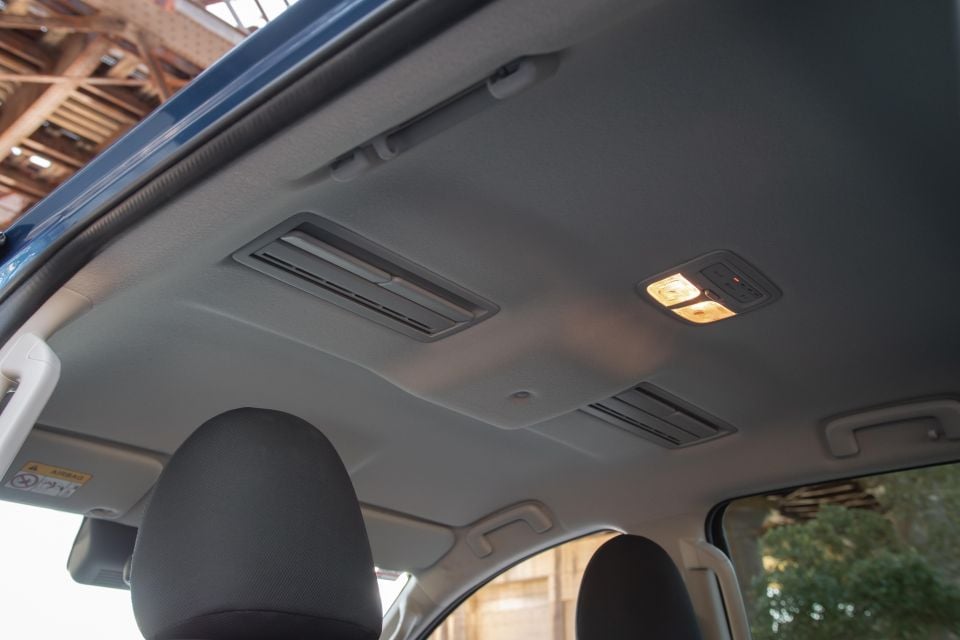

Otherwise, equipment reads much like the cheaper GLX+: halogen exterior lighting bar LED tail lights, a reversing camera, rear parking sensors, rain-sensing wipers and a 7.0-inch touchscreen infotainment system with Apple CarPlay and Android Auto mirroring rather than the cheapo 6.1-inch unit found in low-spec Tritons.
There’s no push-button start, no dual-zone climate control and no proprietary sat-nav, which won’t please buyers who like to venture out of mobile reception range. Seats have ‘regular’ cloth rather than the ‘premium’ cloth grade found in GLS and seating is full mechanical adjustment.
Beneath the skin, there’s other core spec the aligns the Triton GLX-R more closely with the lower rungs of the Triton range than with variants above, including the on-demand all-wheel drive and the ADAS suite of safety features. Speaking of which…
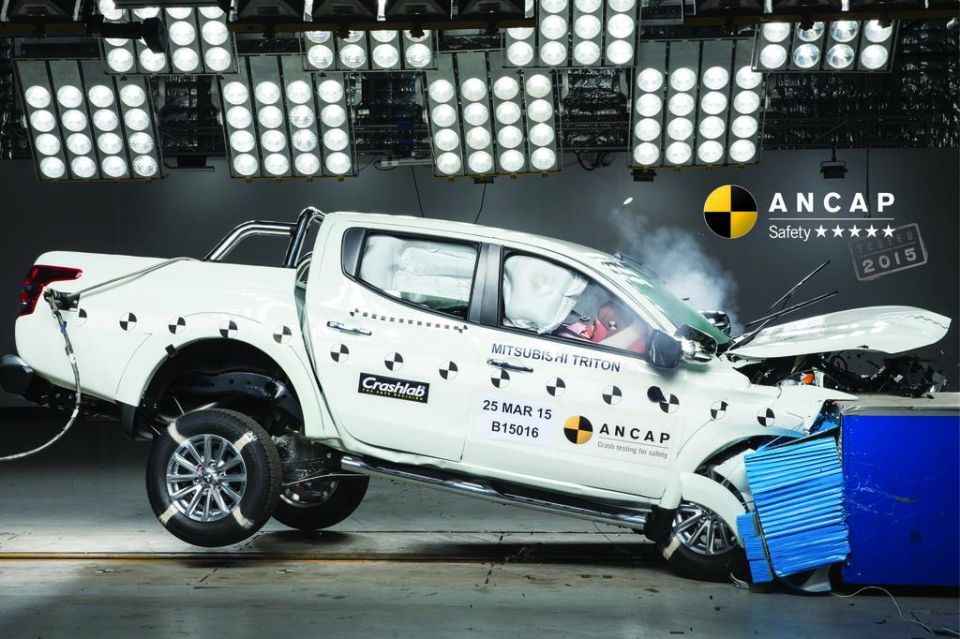
One big deal with the Mitsubishi Triton’s 2019 facelift was the introduction of a segment-leading array of active safety credentials, though the full gamut of assistance – blind-spot monitoring, rear cross traffic alert, the ultrasonic mis-acceleration mitigation and lane changing assistance – is reserved for the high-spec GLS and GSR versions.
Instead, the GLX-R shares the more modest ADAS array with lower-spec Tritons, which incorporates autonomous emergency braking, forward collision warning, pedestrian detection and lane departure warning. Decent, if not outstanding. There’s also no hill descent control or auto high beam, while regular cruise control is fitted where adaptive systems can be had on HiLux and Ranger.
Airbag wise, all Tritons fit front, front side, curtain and driver’s knee bags. The Triton originally scored a full five-star safety rating in ANCAP testing back in (pre-AEB era) 2015 while the report was updated in January 2019 to account for the facelift’s marked level of improvement.
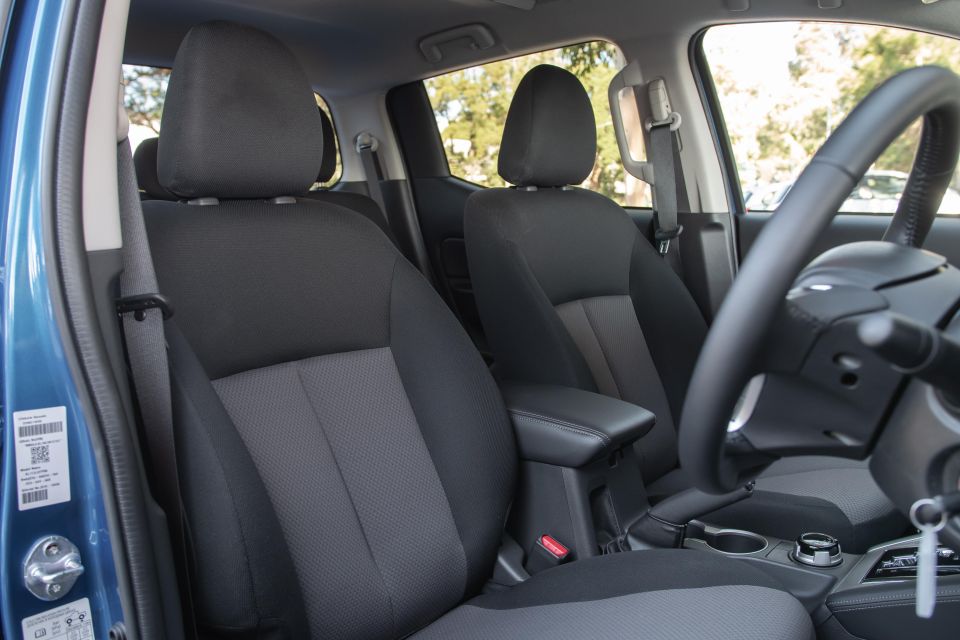

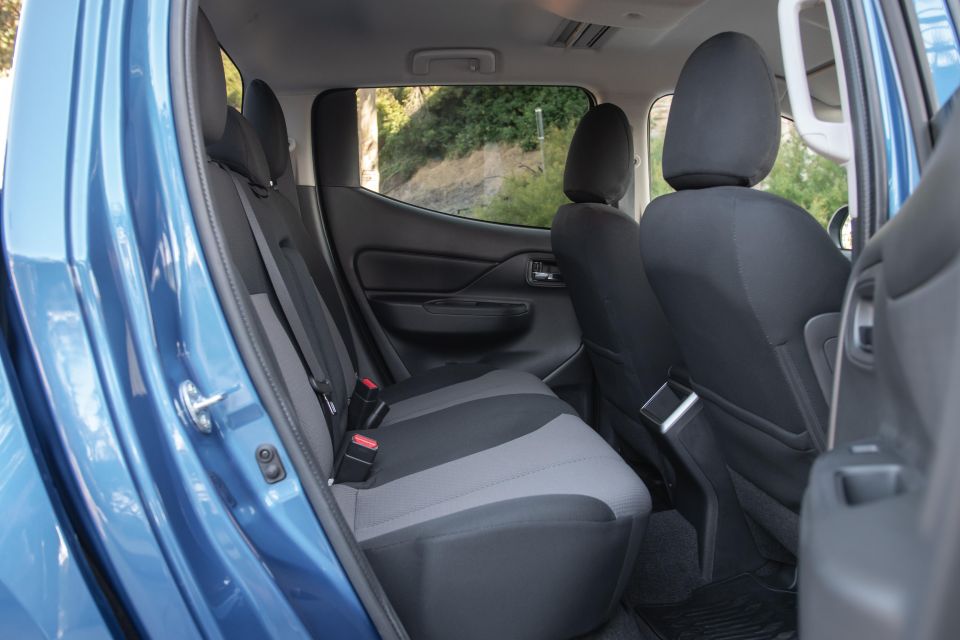
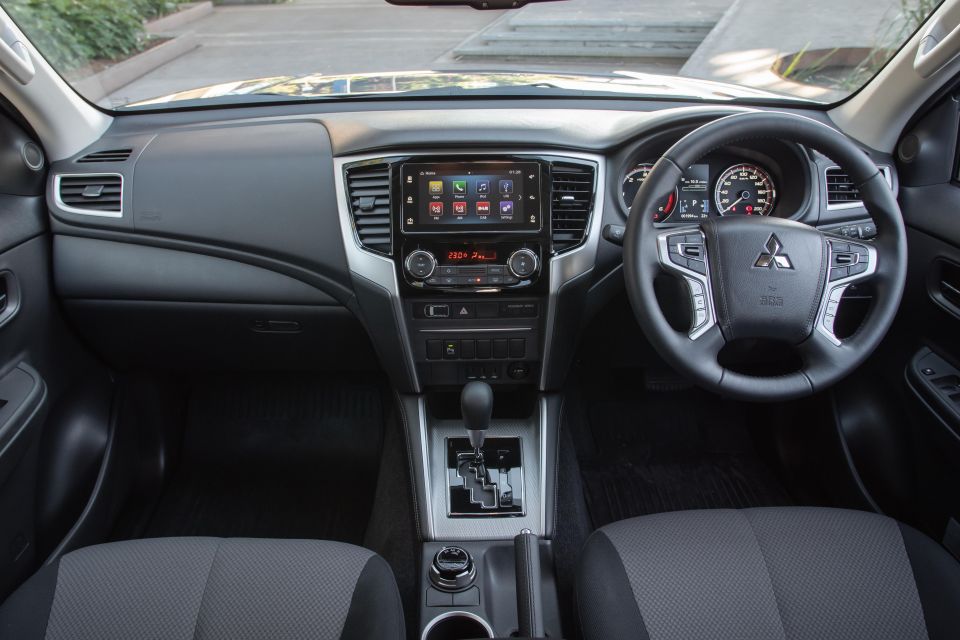
Compared with the smart exterior presentation, climbing inside feels like a step downmarket. It’s not ‘cheap’ per se, though areas such as the conventional key barrel, the hard plastic door trims and the rudimentary seat design and fabric finish all portray a cost-conscious, more ‘work truck’ ambience.
Unsurprisingly, leather wheel/shifter and carpet fitment apart, it’s indistinguishable from the slightly lower-grade GLX+ it’s based off.
There’s not much new to report from our review of that variant, though our test ute wasn’t plagued with strange gremlins like the GLX+’s 7.0-inch touchscreen was. There was also no smartphone mirroring drop-outs, which afflicted Android Auto last time out, though this time we only tested Apple CarPlay connectivity. DAB+ is a nice inclusion though the system’s user interface can be a bit clumsy.
The front seats are reasonably supportive and have prominent side bolsters, though lumbar is lumpy and there’s no method of adjustment bar seat base tilting. Ambience wise, there’s nothing overtly car-like and there’s no mistaking you’re piloting a jacked-up ute, though it’s room, the controls are well located and there’s decent outward visibility.
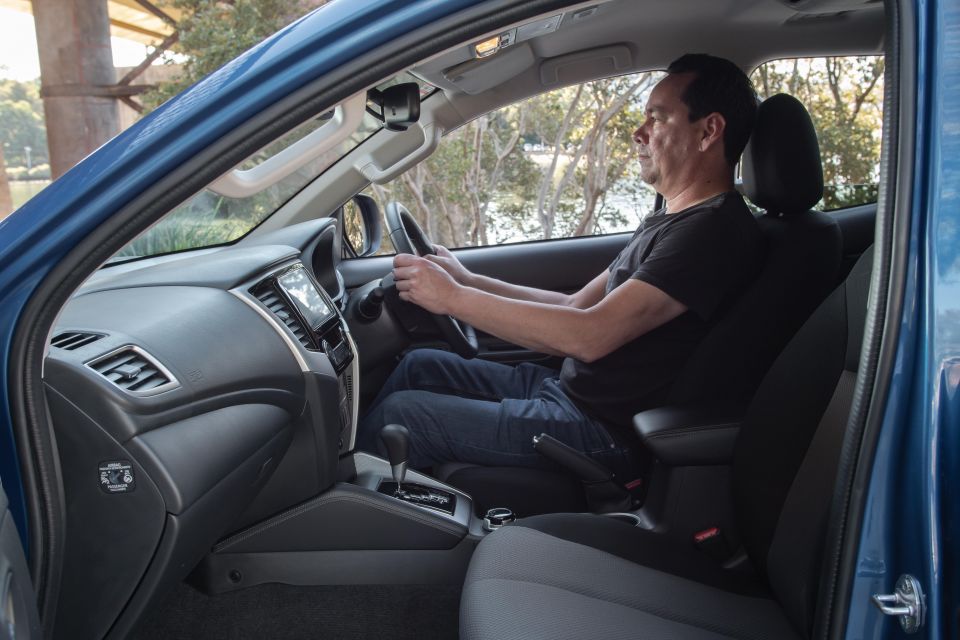
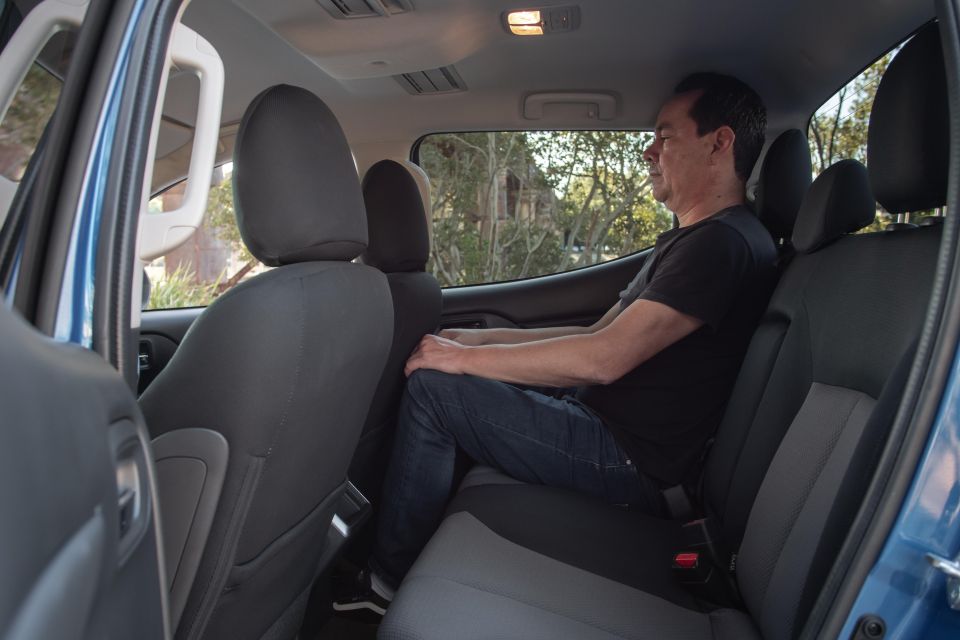

Row two seating’s back and base angle offers reasonable adult comfort compared with the more upright design of some rivals which brings with it appreciable long-haul comfort if to the trade-off of ultimate legroom. Annoyingly for the kids, there’s no device power in back either: the dual USB ports, HDMI port and dual 12-volt outlets (including one in the storage cubby) are front row only.
There are no air vents in the rear of the console but, instead, you equally beneficial air-recirculating roof pods, a feature fitted to upper-spec Tritons. Dual ISOFIX and top-tether points contribute to its fitness as a family hauler.
The tub? It’s 1.52m long and 1.47m wide with 1.085m between the arches so you’ve lucked out of you want to load a standard Aussie pallet (1.165m square).
You do get six liner tie-down hooks and the big-bummed Triton, with its humongous rear overhang, should offer enough cargo space and payload capacity (934kg) for most non-commercial requirement (though how Mr Price fits his Dakar bike in the back is anyone’s guess…).

Mitsubishi’s one-diesel-fits-all means the GLX-R gets the familiar 2.4-litre oiler four cylinder good for a segment-competitive 133kW and 430Nm.
As we found with our GLX+ review, its outputs are comparable to HiLux’s larger 2.8L if down on the ageing Ranger 3.2’s 147kW/470Nm goodness. That said, at a touch under two tonnes (1966kg kerb), it’s one of the more lightweight offerings in segment and over 200kg lighter than Ranger.
While languishing behind the pack with five speeds not long ago, the current six-speed auto is par for the dual-cab ute segment’s middle range.
That said, it’s maximum braking towing capacity of 3100kg – be it auto or six-speed manual – is a bit under-baked when 3500kg is the segment yardstick. Unbraked is a more typical 750kg figure and, for completeness, towball load rating is a decent 310kg.
What firmly pegs the GLX-R as the on-road-centric proposition in the Triton range is its all-wheel drive system. It fits the Easy Select on-demand 4WD system shared with lower-spec Tritons (including the GLX+) rather than the whiz-bang Super Select II system in the GLS and GSR versions, which offers the neat party trick of being able to drive all four wheels on sealed roads.
Thus, it doesn’t get the Super Select’s tricky selectable off-road modes. And, as mentioned, nor does it fit the rear differential standard on GLX+.
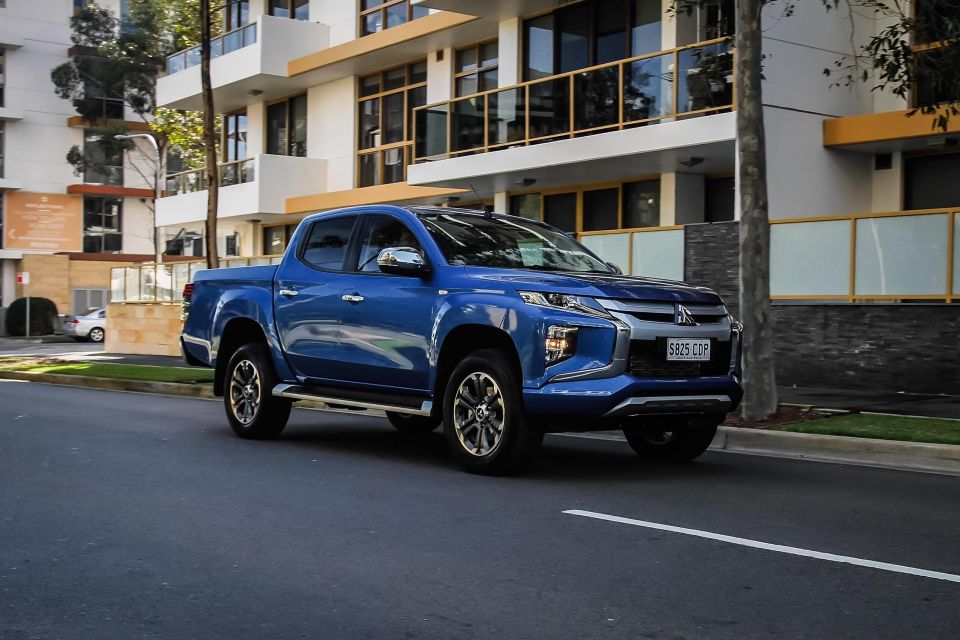
While the Mitsubishi Triton GLX-R would undoubtedly be capable along some beaten paths, particularly with its on-the-fly 4WD engaged at up to 100km/h along gravel or dirt backroads, it’s clearly not the off-roading Triton of choice. A fairer assessment, then, is how it acquits itself as the urban play truck keen on masking its work truck DNA.
It drives and feels like a red-blooded ute, no apologies. It’s not car like nor is overly agricultural. For ride, manners and refinement, the GLX-R seems about middle of the segment pack.
It steers pretty well. And if seems like a strange focal point, the old Triton bugbear of a slow action and absent connection is much improved, some of it engineering and some of it the purchase of those meaty 265/60 18-inch Bridgestone Dueler tyres.
In short, this GLX-R spec is cooperative in tracking where it’s pointed, easy to place on the road and pretty pleasant to punt around the urban confines. At 11.8m, the short-wheelbase chassis also has one of the tightest turning circles in ute-dom. But you really have to keep to tabs on that overhanging tub and that fish-eyed reversing camera and rear sensors are worth their weight in gold.
Ride is pretty decent, too. It’s still firm in compression, a bit fidgety at low speed and wobbles a bit over speed bumps, but it’s not too pitchy with an unladen tub and overall it settles quickly and feels quite surefooted. How this wheel, tyre and rear spring combination seems to subtly round out the ride comfort goes an awful long way to reducing long-haul fatigue and minimising the chance of car sickness for younger kids sat in back.
Is there realistically much, if any, difference between Mitsubishi’s distinction between this (18-inch wheel) rear suspension and the ‘heavy-duty’ set fitted to Tritons sat on narrower 16s? Without back-to-back comparison it’s hard to say. But I can report the more urban-centric GLX-R isn’t “constantly unsettled” as we found when testing the GLX+.
The gut feel is that, for on-road comfort, the GLX-R sits somewhere between its pliant Ranger rival and typically terse HiLux. It’s hardly the last word in family friendliness, but there’s nothing unruly about its manner on sealed roads. Grip, too, is pretty decent on those wide tyres, even in the wet, and it doesn’t lack in the urban experience for the absence of the rear diff.
If the aim was to mask the inner work truck soul, the GLX-R has done quite well.
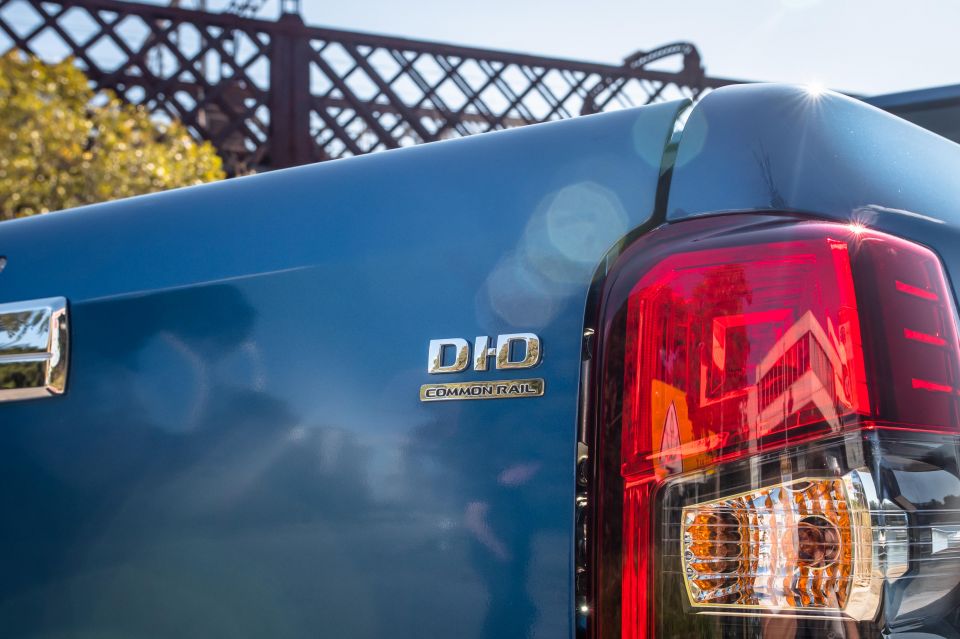
The powertrain is fairly workmanlike but there’s ample on-tap torque and, despite some evident clatter, the 2.4 diesel happily plumbs its 2500rpm peak for most cut-and-thrust driving and settles around the 2000rpm mark at a cruise. That said, the auto is hardly the last word in slickness and intuitive response.
Pace wise, this Triton is brisk enough and generally unstressed in nature, though it can be quite thirsty. It’s advertised as an 8.6L/100km combined prospect but regularly ventures into double figures around town.
If you do decide to go bush, it’s worth mentioning the GLX-R’s approach (31 degrees), departure (23 degrees), ramp breakover (25 degrees) and ground clearance (220mm) are all common with GLS and GSR and marginally better than those of a GLX+.
Mitsubishi has been running an exceptional seven-year warranty offer on Triton for some time now and at the time of writing it remains in play, with coverage is capped at 150,000kms. That’s certainly more enticing than the company’s default five-year/100,000km surety.
There is capped-price servicing of a decent $299 per visit every 12 months or 15,000km, whichever comes first, though disappointingly price-capped surety is only for a duration of three years and up to 45,000kms.
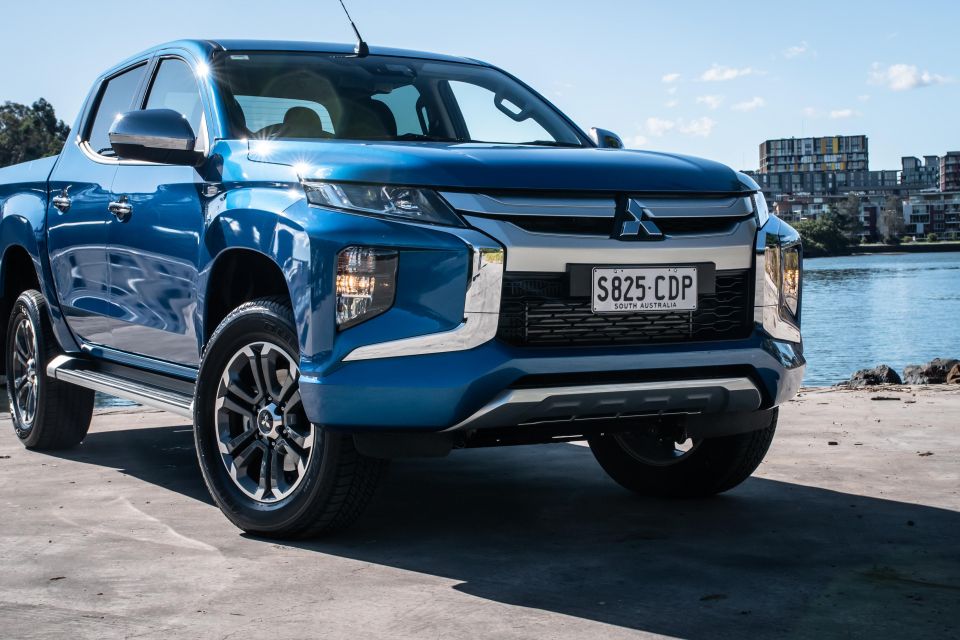
Buy your new car without the stress. It's fast, simple and completely free.

Great service from Travis and team, second time I have used this business would not hesitate to recommend them to anyone
Craig C.
Purchased a Ford Ranger in Sunshine Coast, QLD
CarExpert helped Craig save $7,224 on his Ford Ranger, now let us save you on your next new car.
Get your BEST priceWhile it’s easy to peg the GLX-R as workhorse with lick of High Street rhinoplasty, it brings enough change in key areas to coax a different character and vibe to the more rough-and-tumble GLX+. It’s a viable and distinctive enough alternative, a worthy inclusion to the middle of the Triton range, and the smarter option if you frequent the school run more often than you venture to the back of Whoop Whoop.
It not only looks great – who could have said that of any Triton a few years back – but it has more upmarket presence than a $42,490 driveaway prospect should. Which is precisely the point of its being.
The Mitsubishi Triton GLX-R maintains the Triton’s penchant for value, and while cost cutting is conspicuous in few areas it’s pretty convincing and well-resolved overall.
It is surrounded in range by more capable off-road variants and for not a lot of adjustment in investment. But there are a good many city slickers into the ute lifestyle who’ll happily trade off-road smarts such as a rear diff or hill descent control for pleasant road-going urban friendliness and the kind of upmarket vibe the GLX-R delivers.
Where expert car reviews meet expert car buying – CarExpert gives you trusted advice, personalised service and real savings on your next new car.


Max Davies
5 Days Ago


Max Davies
4 Days Ago


Neil Briscoe
3 Days Ago


Max Davies
2 Days Ago
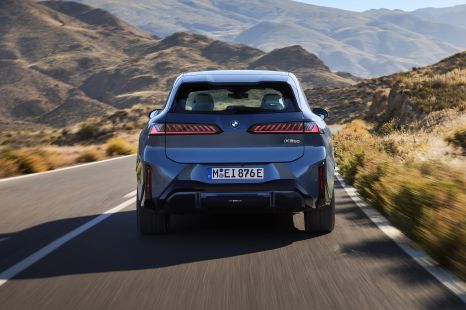

Alborz Fallah
15 Hours Ago


Damion Smy
14 Hours Ago